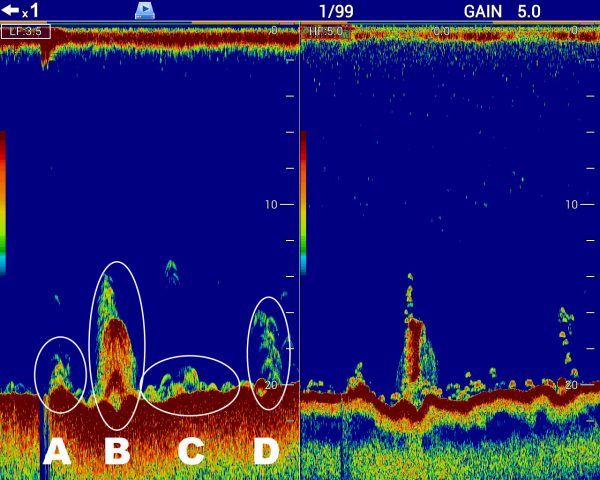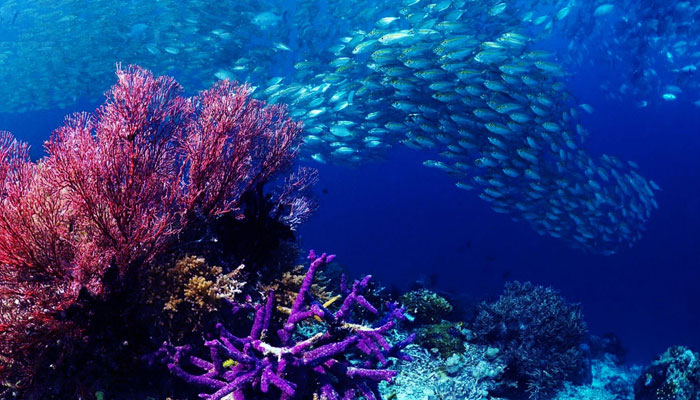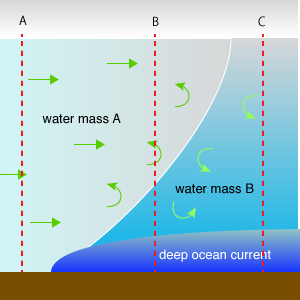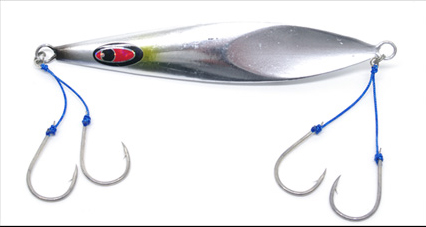How do you find fish?
I wanted to know how much is required to lift the jig above the bottom? And how many rounds of reel usually you are doing in every drop?
How far off the bottom do you play?
This is a very critical question. I mean, this really makes a big difference on how productive you are. You may be fishing for the same amount of time as someone next to you. But if you are moving your jig where there’s no fish, the contact rate will be so much different. If someone always catches more fish than others, he’s probably spending more time in where the fish is.
It really depends on the situation and your target.
I’m not confident enough to tell you exact instructions. I just give you general ideas here.
It’s always important to look at the fish locater and know what’s on the bottom. I try to see the geological features, the shape of the bait groups, and if there’s any signs of big ones around. The shape of the bait groups can tell you a lot about how active the fish are down there. Concentrated or not. On the bottom or off. If there’s any multi-layers of currents, the shape of the bait fish may indicate that.
If you don’t see any geological features or you don’t see much of fish activities, in general, I play up to 20m. I usually do the first play in a fast pace so that I can take out the line slack from the initial drop. And maybe one more up to 20m in a slower pace.
Then for the next couples of plays, I will do what I think is appropriate. Maybe within 10m range. But after 3 or 4 plays, I play up to 20m, fast, so that I take out excess line slack again. Also, playing up high and fast can attract fish in a distance. You are showing your jig. And the jig falls to a different place to start over.
Bait Fish Shape

Some fish finders can indicate the sizes of fish on the screen. But when you get used to your fish finder, you want to switch off the function because the shape of the fish image becomes more important for you.
What looks like a check mark up side down is a fish of a good size. Even if you don’t see it, it may be worth dropping the jig if you like other factors like geological features and bait fish shape.
If the bait fish is concentrated and standing tall, they are active. Possibly somebody is after them. If the bait fish is concentrated and off the bottom, they are most likely under attack. The school doesn’t have to be big. There must be a reason why they are active. It may be worth to drop.
If the bait fish is scattered and scarce, the fish is slow. No predators or no bottom current. If the bait is sticking to the bottom low, no matter how concentrated they are, they are not active. Maybe the bottom current is too fast.
The places where fish hang out usually have some kind of geological feature. It’s a place where the current hits something and changes. The fish is always where there’s a change. When you find an active bait fish, don’t just look at the fish image. Study what geological features the place has. If you keep doing that, you will be able to make a good guess when you look at just the bottom features.
Take a look at the picture above for example. I just share what I think from this picture.
The left bump A is pretty interesting with a small gathering over the top. It can be a bump where the current hits. Sometimes groupers ambush around this kind of place. B with a big, tall concentration on top is definitely a place to drop. The 2-bump formation must have some kind of complexity to attract fish. If I were a captain, I would cross-check these 2 places (If I ran east-west to get this picture, I will run north-south to cross-check.) to get more understanding.
I’m not sure about the gathering in D spot. Sizes are big. They are in group. But there’s no bait fish around. These may not be the kind of fish that I target by jigging. If the boat turned around, after seeing A and B, and found this D spot, it makes sense. D is actually near B, and C is all around B complexity.
But if the scan was done in one straight line, I will try B first, up to 15 meters. But don’t forget to try A. Play up to 5m. All the little bumps in C should not be missed. They all look nice for groupers. Play up to 5m. Even if you are targeting groupers, you should play high and fast from time to time like I said before.
Like I said, if you want to understand the geological feature, you should cross-check the place from 2 perpendicular angles. And try to understand the images with the direction of current. (The direction of current is not the direction of your drift because your boat is pushed by the wind.) Know that the bait fish gathers in front of the bump toward the current. When you see something like A, having the bait fish right over the bump, you will know the current is not flowing from left to right or right to left. It’s flowing from another direction. When you cross-check, you will have a better idea.
Once you learn to read geological features, you can find suspicious bumps and dips. When you do, maybe you don’t see fish in the first scan, but you cross-check and maybe you find a bait ball. I’ve seen that so many times. You should learn what is suspicious.
Multi-layered Currents
If there’s a double layer, it means there are 2 water masses not mixing together because they have different temperatures etc. It’s very hard for small baits to cross that line. It’s like a wall to them. Big fish take advantage of that. They chase the baits up against the wall to hunt.
You can not see or hear what is on the other side of the wall. It’s a perfect ambush situation. Some baits break through the wall by being chased, like baits breaking the surface to jump in the air. Big fish may be hanging around on the other side of the wall and pick on those fugitives. Big fish also may dash and break through the wall with its mouth wide open.
For anglers too, it’s a nice place to target. For example, if I see the double layer at 5m off the bottom, I play around that, maybe from 0m to 10m. Sometimes fast, dashing actions, sometimes slow and hesitating moves.
Hope this information helps you!
Related Posts
Leave a Reply Cancel reply
Categories
- 1. SPJ (57)
- 1-1. Principles (9)
- 1-2. Techniques (11)
- 1-3. Setup (17)
- 1-4. FAQ (19)
- 1-5. Tackles (3)
- 1-6. Video Gallery (2)
- 2. Other Offshore Games (5)
- 3. Fishing Report (105)
- 3-1. Totos (25)
- 3-2. Readers (72)
- 4. Fish Cooking (19)
- 4-1. Iki-Jime (3)
- 4-2. The Art of Sashimi (5)
- 4-3. Recipe (7)
- 4-4. Seasoning (3)
- 5. Fishing Charter (6)
- Fish (12)





